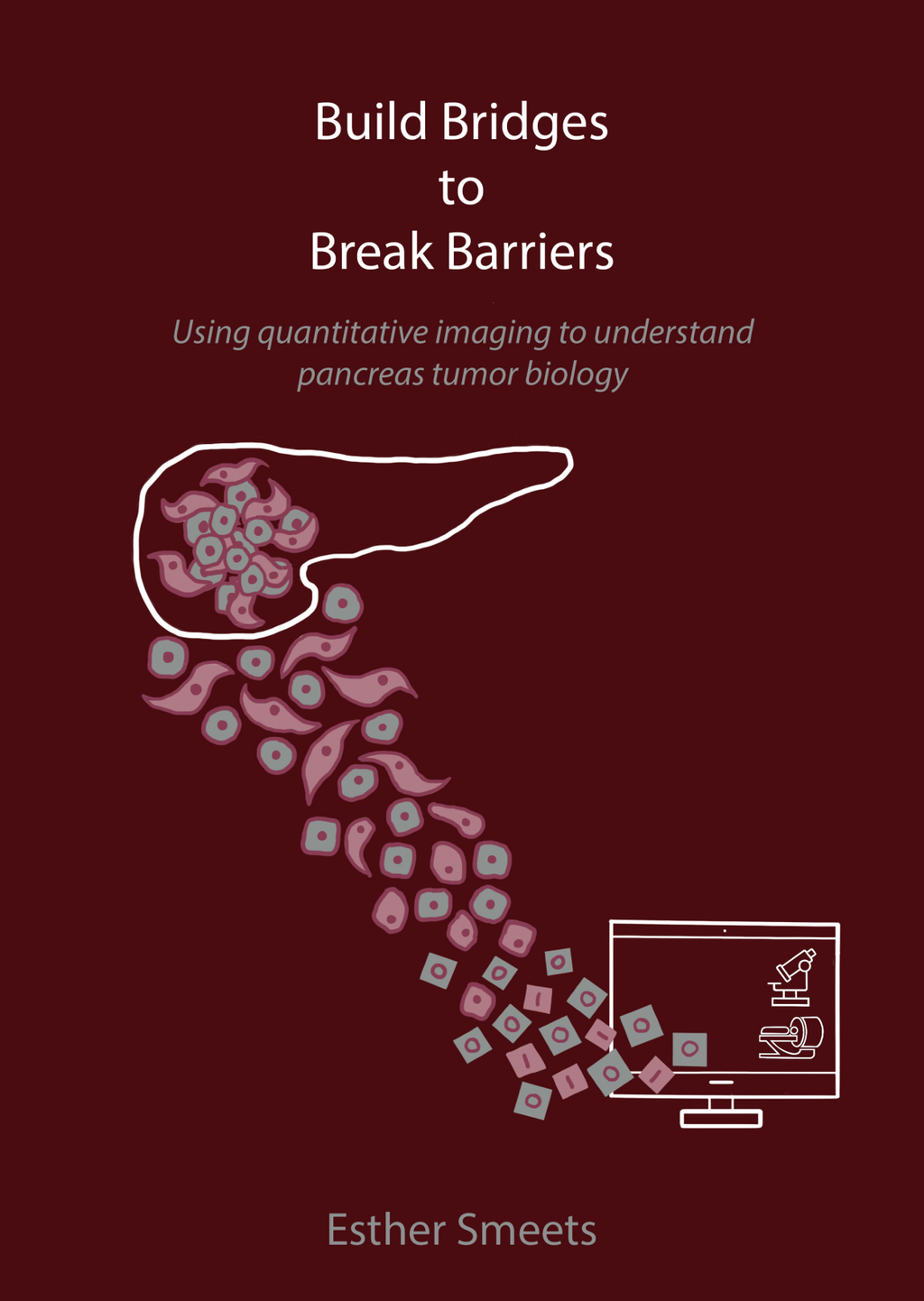Build bridges to break barriers: Using quantitative imaging to understand pancreas tumor biology
E. Markus-Smeets
- Promotor: M. Gotthardt and F. Ciompi
- Copromotor: E. Aarntzen and S. van Lith
- Graduation year: 2025
- Radboud University
Abstract
Pancreatic ductal adenocarcinoma (PDAC) is a less common form of cancer; however, it significantly contributes to cancer-related mortality. This dismal prognosis of PDAC is attributed to various factors, late diagnosis, difficult anatomical location for surgery and extensive stromal desmoplasia which hampers tissue penetration of for example chemotherapy and immune therapy. Moreover, PDAC is known for its metabolic heterogenous phenotype, which is also associated with therapy resistance. Through genome sequencing, two PDAC subtypes, namely 'classical' and 'quasi-mesenchymal' are identified, of which the latter has worse prognosis. These two subtypes also exhibit a different metabolic profile. For PDAC the knowledge about these tumor types and the most efficient treatment is limited. Therefore, it is needed for this research field to collaborate and innovate novel diagnostic and therapeutic strategies.
The primary goals of this thesis revolve around two key aims. Initially, our objective is to overcome barriers by integrating biology, quantitative imaging analyses, and artificial intelligence, thereby enhancing our understanding of diseases and predicting biological responses. This attempt involves the development of a novel methodology for studying PDAC utilizing PET scans, a non-invasive imaging technique for assessing functional processes. Secondly, we delved into innovative treatment modalities aimed at disrupting the stromal barrier and rendering tumors more amenable to conventional therapeutic interventions.
